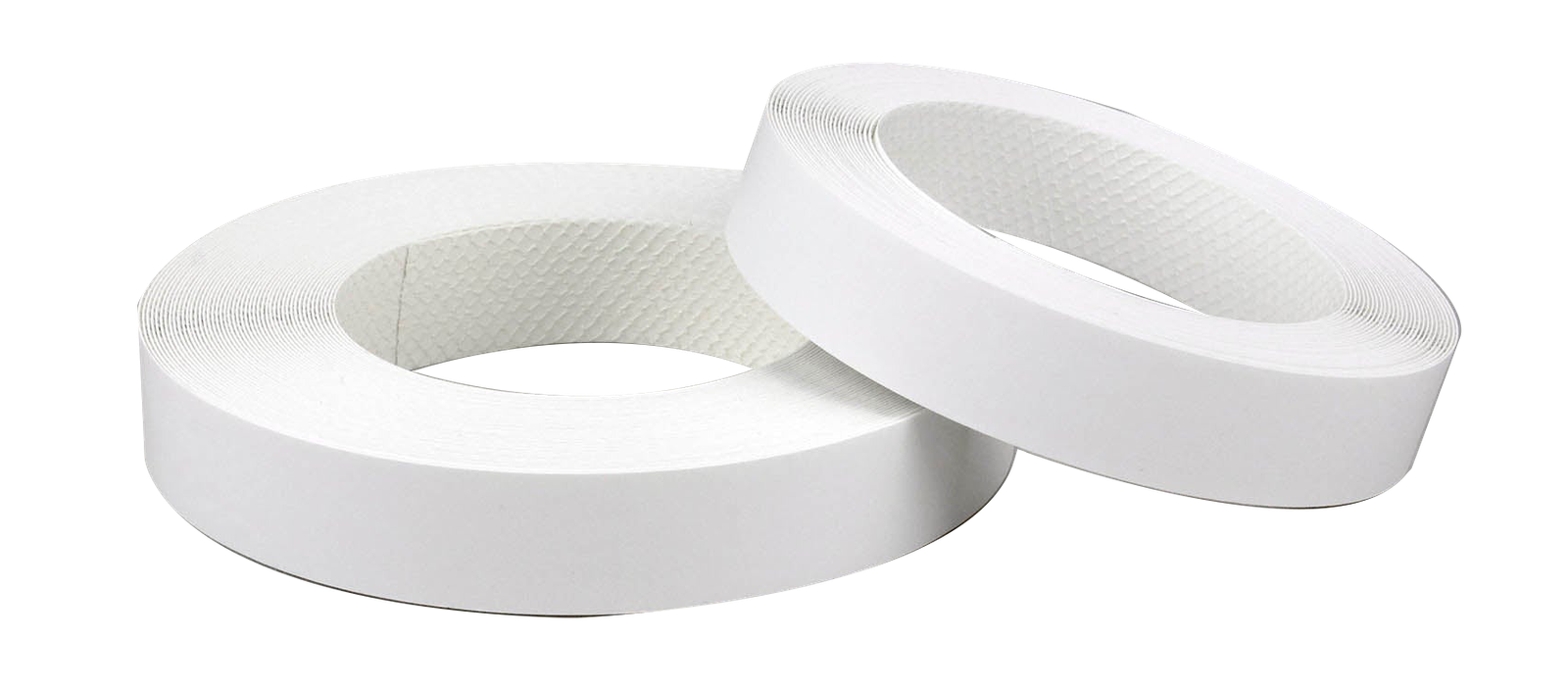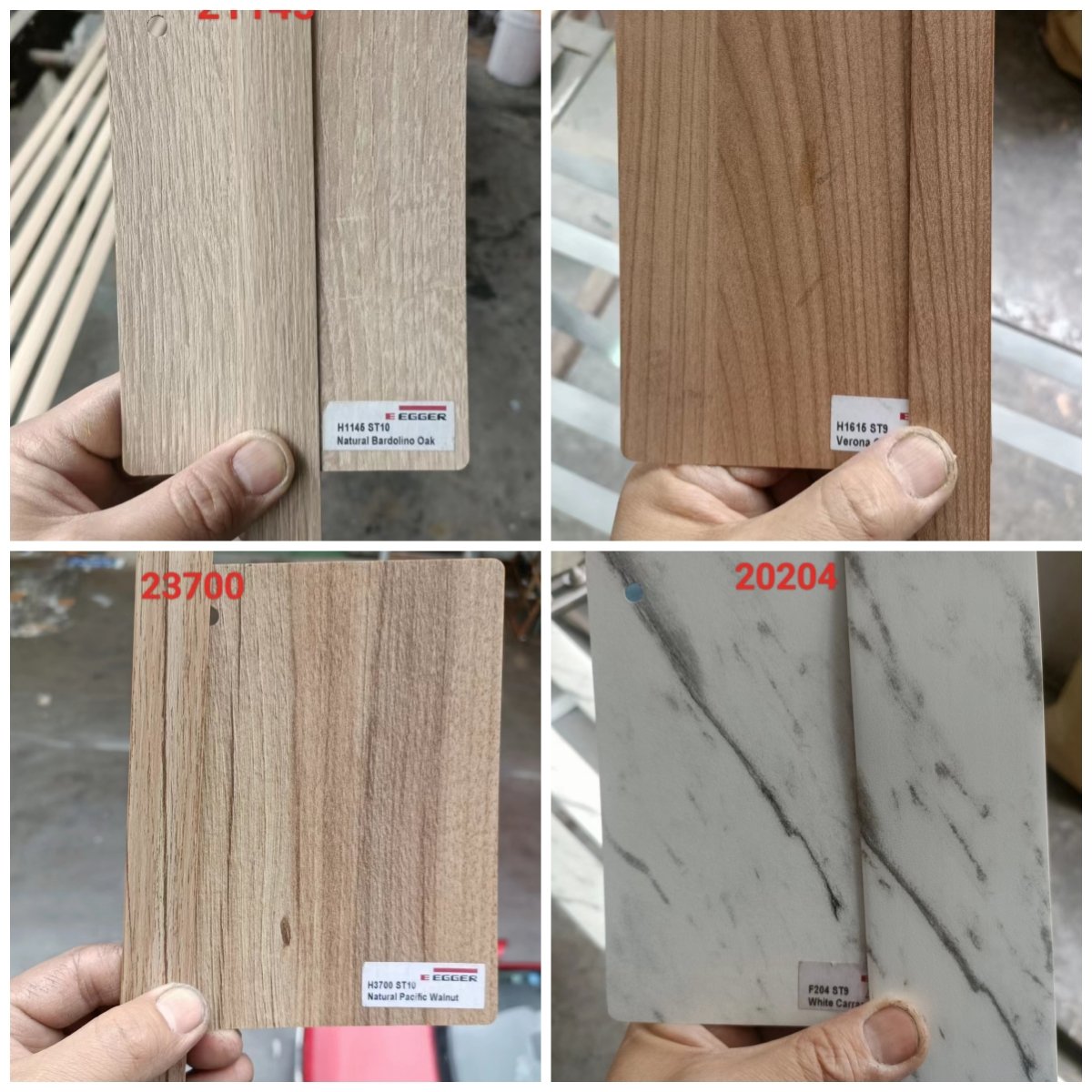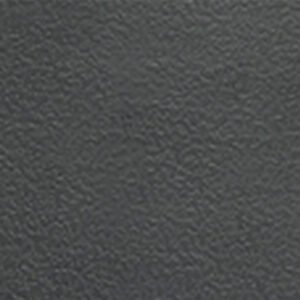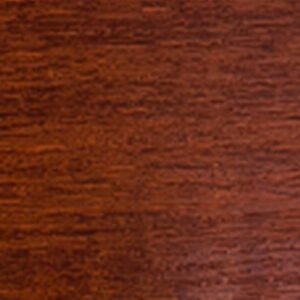What is edge band?
What is edge band? – Edge band (Edeg banding) is a thin material used to seal exposed and raw edges of plywood or other wood composites. It typically has a heat-sensitive adhesive on one side that, when activated, bonds securely to the board. The other side acts as a protective barrier against dust and moisture. While edge banding primarily hides the raw edges of plywood to enhance the finished look of your cabinets, it can also prevent warping of the interior plywood.

Why use edge banding?
Durability
Edgebanding reinforces exposed edges, making furniture more resistant to everyday wear and tear. Raw edges are susceptible to damage from scratches, moisture, and other elements, but edgebanding can significantly increase the durability of your cabinets.
Aesthetic Appeal
Unfinished plywood looks rough and unpolished. Edgebanding provides a smooth, finished look that allows you to match or contrast the color and texture of your cabinets for a seamless, sophisticated look.
Types of Edgebanding
PVC Edgebanding
PVC (polyvinyl chloride) edgebanding is versatile and particularly useful for pressure laminate cabinets and melamine cabinets. Made from thermoplastic resins, PVC is known for its flexibility and durability and comes in a variety of colors, textures, and wood grains. This versatility makes it easy to find the right edgebanding for your laminate.
Veneer Edgebanding
Veneer edgebanding is made from slices of real wood and has an elegant, natural look. Available in finished and semi-finished forms, veneer edgebanding is perfect for projects that want to mimic real wood without the hefty price tag.
Other Materials
- ABS Edgebanding: An eco-friendly alternative to PVC, ABS is durable and can withstand extreme temperatures.
- Polypropylene (PP): Known for its chemical resistance and flexibility.
- PMMA (Acrylic): Provides a high-end, glass-like look but can be more expensive.
- Melamine: A flexible, durable material that protects furniture corners and is suitable for a variety of applications.
- T-Molding: Used to transition between surfaces of equal thickness.
Choose the Right Thickness
Edgebanding comes in a variety of thicknesses, typically ranging from 0.018 inches to 5 mm. The thickness you choose depends on the intended use:
- 0.5mm: For low-use areas or trim.
- 1mm: Recommended for high-traffic areas such as kitchens and bathrooms.
- 3mm: Best for commercial applications where maximum strength is needed.
How do you apply edgebanding?
Edgebanding can be applied in a variety of ways:
- Pre-glued edgebanding: Simply cut the edgebanding to size, place it over the edge, and activate the adhesive using a household iron.
- Non-glued edgebanding: Apply glue (such as PVA) to the edge of the panel and the edgebanding, then use a clamp to press them together.
- Machine application
- For larger projects, edgebanding machines automate the process, ensuring consistent application and trimming for a neat finish. These machines can handle a wide range of thicknesses and widths, which improves efficiency and quality.

Common Problems
Peeling
One of the most common problems with edgebanding is peeling, which can occur if the adhesive fails or the edge banding is too thin. Regular maintenance can solve this problem.
Cost considerations
PVC edgebanding is generally more affordable due to its simpler manufacturing process. Solid wood edgebanding, while more expensive, offers a premium solution with increased durability.
Conclusion
Edge banding is essential to achieving a sophisticated look in your furniture design. By understanding the different types of edge banding and their applications, you can make an informed choice that will enhance the durability and beauty of your project. Whether you’re a DIY enthusiast or a furniture maker, proper edge banding will ensure your work looks professional and stands the test of time.
For inquiries, please contact us at emily.gu@asiaedgebanding.com or call +86-15618525178.






















Leave a Reply